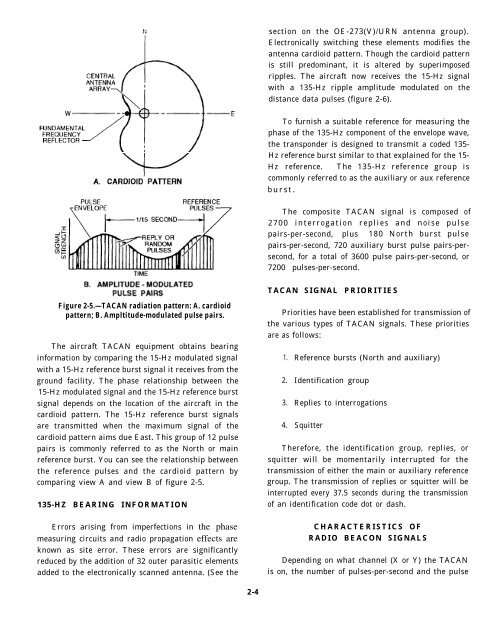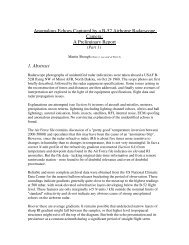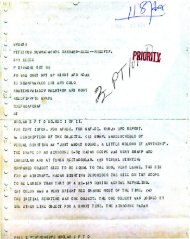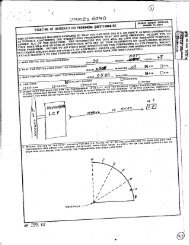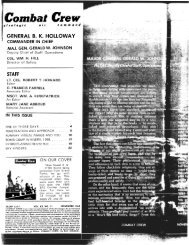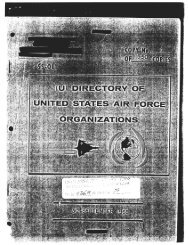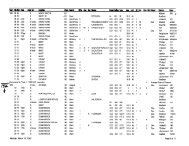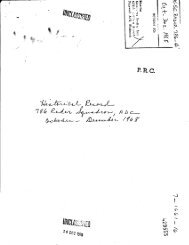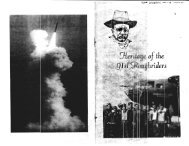TACTICAL AIR NAVIGATION (TACAN) - GlobalSecurity.org
TACTICAL AIR NAVIGATION (TACAN) - GlobalSecurity.org
TACTICAL AIR NAVIGATION (TACAN) - GlobalSecurity.org
You also want an ePaper? Increase the reach of your titles
YUMPU automatically turns print PDFs into web optimized ePapers that Google loves.
section on the OE-273(V)/URN antenna group).<br />
Electronically switching these elements modifies the<br />
antenna cardioid pattern. Though the cardioid pattern<br />
is still predominant, it is altered by superimposed<br />
ripples. The aircraft now receives the 15-Hz signal<br />
with a 135-Hz ripple amplitude modulated on the<br />
distance data pulses (figure 2-6).<br />
To furnish a suitable reference for measuring the<br />
phase of the 135-Hz component of the envelope wave,<br />
the transponder is designed to transmit a coded 135-<br />
Hz reference burst similar to that explained for the 15-<br />
Hz reference. The 135-Hz reference group is<br />
commonly referred to as the auxiliary or aux reference<br />
burst.<br />
The composite <strong>TACAN</strong> signal is composed of<br />
2700 interrogation replies and noise pulse<br />
pairs-per-second, plus 180 North burst pulse<br />
pairs-per-second, 720 auxiliary burst pulse pairs-persecond,<br />
for a total of 3600 pulse pairs-per-second, or<br />
7200 pulses-per-second.<br />
<strong>TACAN</strong> SIGNAL PRIORITIES<br />
Figure 2-5.—<strong>TACAN</strong> radiation pattern: A. cardioid<br />
pattern; B. Ampltitude-modulated pulse pairs.<br />
The aircraft <strong>TACAN</strong> equipment obtains bearing<br />
information by comparing the 15-Hz modulated signal<br />
with a 15-Hz reference burst signal it receives from the<br />
ground facility. The phase relationship between the<br />
15-Hz modulated signal and the 15-Hz reference burst<br />
signal depends on the location of the aircraft in the<br />
cardioid pattern. The 15-Hz reference burst signals<br />
are transmitted when the maximum signal of the<br />
cardioid pattern aims due East. This group of 12 pulse<br />
pairs is commonly referred to as the North or main<br />
reference burst. You can see the relationship between<br />
the reference pulses and the cardioid pattern by<br />
comparing view A and view B of figure 2-5.<br />
135-HZ BEARING INFORMATION<br />
Priorities have been established for transmission of<br />
the various types of <strong>TACAN</strong> signals. These priorities<br />
are as follows:<br />
1.<br />
2.<br />
3.<br />
4.<br />
Reference bursts (North and auxiliary)<br />
Identification group<br />
Replies to interrogations<br />
Squitter<br />
Therefore, the identification group, replies, or<br />
squitter will be momentarily interrupted for the<br />
transmission of either the main or auxiliary reference<br />
group. The transmission of replies or squitter will be<br />
interrupted every 37.5 seconds during the transmission<br />
of an identification code dot or dash.<br />
Errors arising from imperfections in the phase<br />
measuring circuits and radio propagation effects are<br />
known as site error. These errors are significantly<br />
reduced by the addition of 32 outer parasitic elements<br />
added to the electronically scanned antenna. (See the<br />
CHARACTERISTICS OF<br />
RADIO BEACON SIGNALS<br />
Depending on what channel (X or Y) the <strong>TACAN</strong><br />
is on, the number of pulses-per-second and the pulse<br />
2-4


